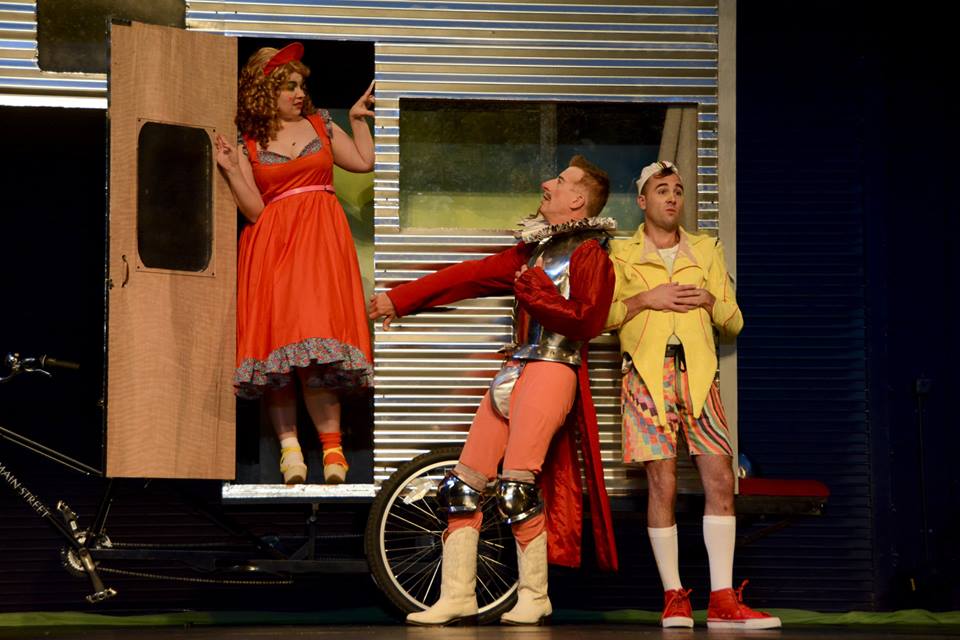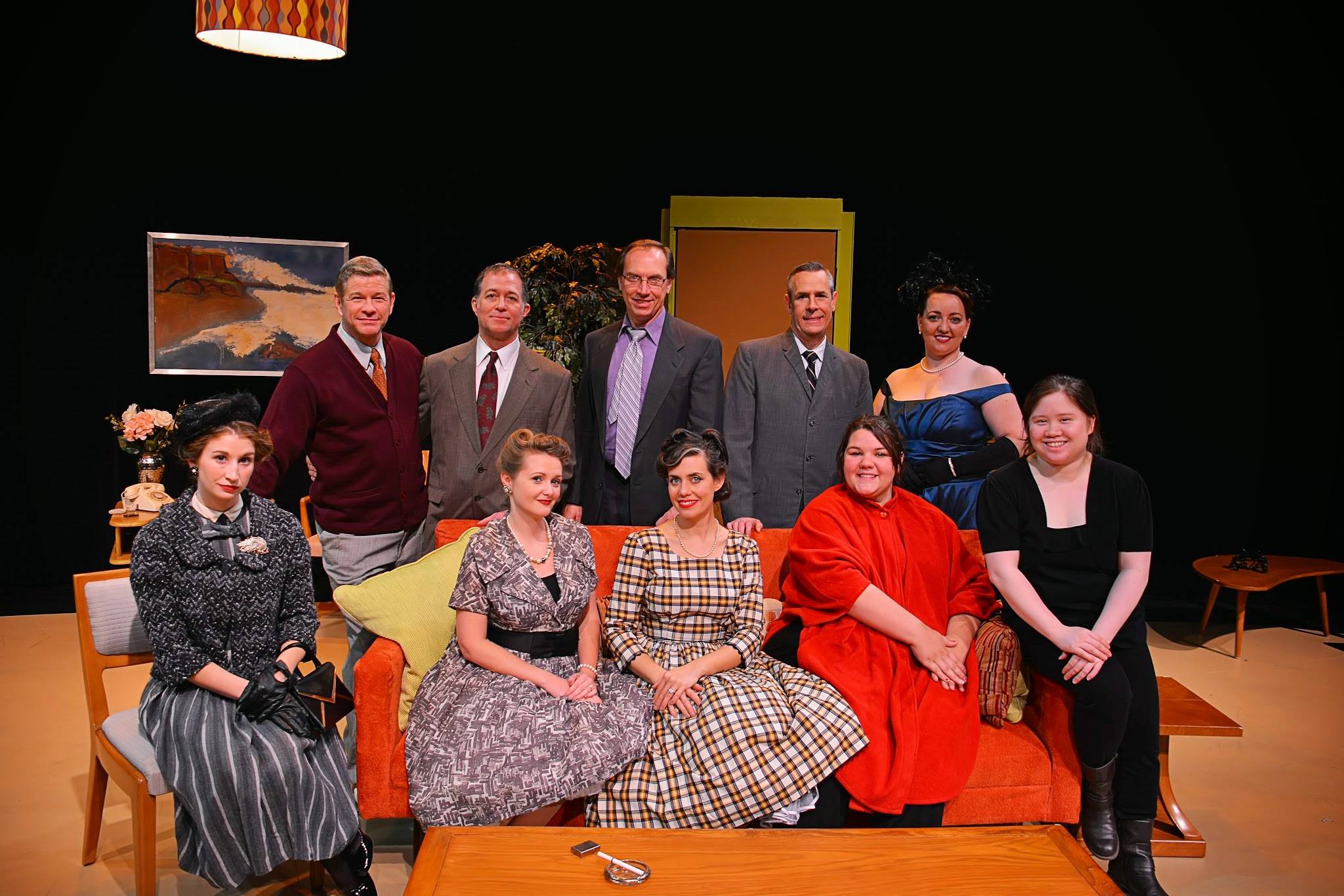Photo by Meagan Jordan
Robert Curran: Louisville Ballet
Spoiler Alert: The big news for performing arts lovers is that, thanks to a renewed understanding of mutual benefit, the Louisville Orchestra will be providing live music for every performance of The Brown-Forman Nutcracker this season! Robert Curran, Artistic and Executive Director of Louisville Ballet, set the tone for our discussion of the organization’s biggest event of every season by talking about the relevance of bringing this classic holiday production to the stage each year. His goal is to continue to keep it magical for both the audiences and the performers.
By Scott Dowd
Entire contents copyright © 2015 Fearless Designs. All rights reserved.
Scott Dowd: It’s been said that a dancer’s life is the struggle to create while walking a razor-thin line between career-ending injury and the inevitable progression of time, all the while balancing the demands of relationships, family and life maintenance.
Robert Curran: I think that’s accurate—it’s not bleak though. It’s exciting. Every dancer knows that you’ve got a certain amount of time to get as many opportunities to express yourself as possible. It’s just the nature of ballet that it doesn’t last very long.
SD: And an injury could put an end to that at any moment.
RC: It is a constant concern. Your whole focus is on maintaining strength and stamina that will avoid injury. Any time spent healing is time you miss performing.
SD: Do you feel you gave up a lot for that opportunity?
RC: Yes. You give up almost everything else. Every decision you make is impacted by your career: decisions about having a family, whether or not you continue to live in the country you were born in, what you have for breakfast. But what an amazing career to make the sacrifice for! I don’t regret one single sacrifice that I made for my career—not for a second. It was a thrill! It was such a great ride.
SD: Is it a conscious choice for most dancers?
RC: I can’t speak for everyone, but it wasn’t really a conscious decision for me. I truly feel like ballet chose me. It was a force that was much bigger than me, so I didn’t really question it. There weren’t many times when I took pause before I said, “Yeah, sure. I’ll do that.” I think the brevity of the career builds that into you as well. Somebody offers you an opportunity to perform somewhere and you take it. You don’t think twice, because that opportunity is probably not going to come again.
SD: So it’s not like being a movie actor, where you are crafting a career by scouting for just the right roles, with particular directors, avoiding over-saturation, etc.
RC: Well, you do have to be selective. You do have an image to manage. But, by-and-large, any opportunity to get on stage to perform the way you feel you should be performing is snapped up.
SD: Can you be typecast in ballet?
RC: Definitely. A lot of dancers struggle against that; I did. I was typecast into “leading man” roles. I was a strong partner, so if there was any ballet that had a lot of lifting and a lot of carrying around of the ladies, that’s what I was put into. I had to struggle against that to get some stage time without a lady in front of me. Not that I minded, because partnering was—and remains to this day—the most rewarding aspect of my job. But I could dance, and I trained to be a dancer, and partnering is just one aspect.
SD: Traditionally, it seems most choreographers focused on the female dancers and gave them most of the time in the spotlight. When did that change?
RC: Not until the twentieth century with the arrival of dancers like Nijinsky and Diaghilev’s Ballet Russe. Even today there are changes being made to many traditional works. For instance, if you look at Nureyev’s production of Sleeping Beauty, there is an epic solo for the prince in the second act that doesn’t exist in the original. The dancing role for men in ballet is just continuing to grow. Choreographers like Wayne McGregor, David Dawson and Justin Peck are featuring men and women much more equally. With Wayne McGregor, it’s to the point of being androgynous.
SD: The choreographer of The Brown-Forman Nutcracker, Val Caniparoli, also has a new work, Tears, that has a chorus of four men and three couples. So he’s using more men as well.
RC: Indeed.
SD: His Nutcracker, however, is about as traditional as they come. I understand there will be some changes made for this season. In the essentials of The Nutcracker, what absolutely has to remain and what is open to change?
RC: I think there are two things. One is the tradition. In Australia, where Christmas is in the summertime, the tradition of The Nutcracker didn’t stick. That being said, The Australian Ballet has two beautiful productions of The Nutcracker, but they are not performed during the holiday season. In this country, The Nutcracker is a very important, very beautiful Christmas tradition. The other essential thing that must exist in The Nutcracker is the coming-of-age story. It’s about a little girl’s last indulgence in fantasy, and the majority of productions feature that theme. The Australian Ballet’s Graeme Murphy production looks at it from the other end of life: a retired ballerina looks back on her life in Russia before she immigrated to Australia. She goes back through her life, noting the passage of time—performing for the Czar, the Russian revolution, going on tour, moving to Australia. It’s a different coming-of-age story, but it is still at the core of The Nutcracker. The element of time passing is inextricably linked to the ballet coming back every year, as every Christmas we look at another generation of young, budding ballerinas sitting in the audience.
SD: This is the sixth season for Val Caniparoli’s vision of The Nutcracker. How often do you think the audience turns over?
RC: I would love to see a study over a hundred years. I suspect that you may get a little Caroline, five years old, who comes with grandma until she’s twelve, decides it’s not for her, has children when she’s twenty-five. Five years later, her mother is taking the grandchildren, and the cycle repeats—with variations, of course—until Caroline takes her grandchildren. I used a woman as my example, but you would be surprised at how many fathers bring their daughters and sons. I am always thrilled by the mix of parents and children and, with The Brown-Forman Nutcracker in particular, there is an amazing cross-section of the community in terms of class, race, age, gender and geography. People come from all over to experience this ballet. It’s very different from any other Louisville Ballet production in the breadth of its appeal.
SD: I imagine you will want to keep some of the changes a surprise, but can you tell us anything about what Val is planning for this season?
RC: In all honesty, this production is one of the best I have seen in the world. There won’t be any changes to the running order. The sets and the costumes will all look the same. The bar was set so high that there’s not very much that needs to be done. But Val recognizes that there are certain small choreographic nuances that can be improved upon. There are certain entrances and exits, questions of timing, small things that can enhance the production as a whole, but can also spark new energy into the company. In a recurring production, there can be a kind of fatigue that sets in. Challenging that with some extra nuances and changes can be a good thing for the dancers. Fortunately, we’re getting a lot of new energy from the large number of very talented trainees who have joined the company this year. They never get more work than with The Brown-Forman Nutcracker because it’s such a big production. But for the main company, where there has been no turnover, they have been doing this production for three or four years now and it’s good for them to have changes. Having Val come back himself will also breathe new life into the show.
SD: Inevitably, the children participating in The Brown-Forman Nutcracker will change from year to year.
RC: Yes. We had our children’s auditions about three weeks ago with about 160 young dancers all vying for a role. It’s exciting that there is such interest in this production and that so many of them have this as an ambition. It is a testament to the company. It’s a thrill to watch the little mice or the soldiers standing side-stage preparing for an experience that will stay with them for their lifetime. I remember when I was a child “extra” in The Australian Ballet’s Swan Lake: just getting to stand back stage and see what the dancers’ makeup looked like and how they got ready and how focused/stressed they were beforehand and how excited they were when they came off stage. It’s what made me even more sure that it was the life I wanted for myself. If a small percentage of the hundred kids in The Nutcracker go on to pursue careers in this amazing art form, I would be thrilled.
SD: Some of these children have been in the production for several years, progressing through the ranks.
RC: Definitely! From angel, mouse, party kid, jockey, soldier…to dancer!
SD: You have forged a new relationship with the Louisville Orchestra this season. How will that be reflected in your production of The Brown-Forman Nutcracker?
RC: We will have live music for every production this season. Charles Barker, one of the principal conductors for American Ballet Theatre, came in to work with us on Coppélia; and we will have Tara Simoncic, another wonderful conductor, for the rest of the season. There is a generosity required of a ballet conductor as they coordinate two groups of artists. Above eye level, they are making sure the dancers are safe and able to express themselves as best they possible can. Below eye level, they are working with the same challenges with the Louisville Orchestra. There is a give-and-take there that a symphonic conductor doesn’t have to deal with. The ballet conductor is responsible for supporting and enhancing the artistic vision of two groups simultaneously. I don’t know that the difficulty is fully appreciated.
SD: It sounds like you are preparing for another very successful production.
RC: Absolutely. I didn’t know what I was going to get when I arrived here, but The Brown-Forman Nutcracker is on par with the finest productions I have experienced around the world. It is easily one of my top three in terms of Val’s choreography and its glorious designs. I really want Louisville audiences to understand that they are taking part in a world-class experience when they come to Whitney Hall to see this production.
The Nutcracker
December 12 – 20, 2015
Louisville Ballet
Whitney Hall of The Kentucky Center for the Arts
501 West Main Street
Louisville, KY 40202
502.584.7777
kentuckycenter.org
Scott Dowd has a wealth of experience working within and commenting upon the arts scene in Louisville. He has been involved with Kentucky Opera, the Louisville Orchestra, and Louisville Public Media. His talents and experience include: Actor; Director; Singer; Musician; Radio and Television Interviewer; Classical and News Jock; Public Speaking; Public Relations; Marketing; Development; Writer; Substantive Editor. He currently serves on the Board for Arts-Louisville.com.





